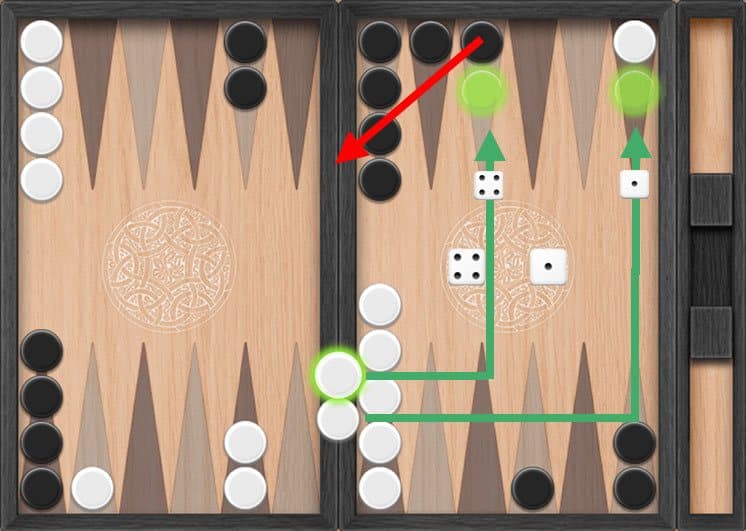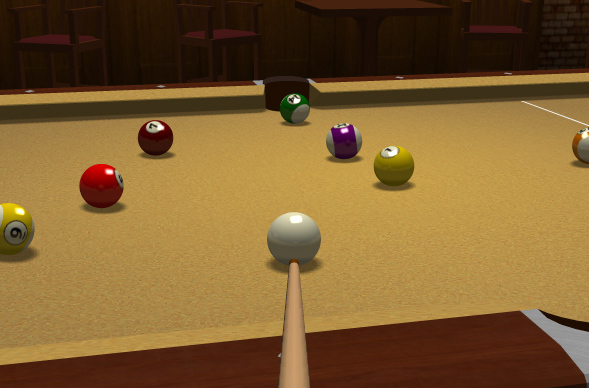How To Backgammon

| Advanced Backgammon Tips |
| by Martin Short |
| 2001 |
Backgammon is a game for two players, played on a board consisting of twenty-four narrow triangles called points. The triangles alternate in color and are grouped into four quadrants of six triangles each. The quadrants are referred to as a player's home board. Backgammon Game Strategy Fortify your checkers in backgammon by ensuring all remain in stacks of two or more at all times. Knock opponent backgammon checkers off as much as possible. Build up your home territory with two checkers + in each spot. This makes it more difficult for the opponent to roll.
Each player places 2 pieces on the 24 point, 5 pieces on the 13 point, 3 on the 8 point and 5 on the six point. Always arranged in a vertical line. The Objective of Backgammon / How to Win. The objective of the game is to bear off each of your own pieces before the opponent. One of the main strategies on how to play backgammon well is thus to close all the points in your inner board and hit an opponent’s blot in order to keep him off the game. The end of the game Once all your checkers are inside your inner board, the last part of the game is starting. Set the board on a level playing surface between the two players. Count the playing discs to confirm that you have the correct number. There should be 15 each of two colors, for a total of 30. If you're playing a more serious game, you might use a doubling cube, but it has no impact on the initial setup.
|

| Other articles with Backgammon Tips |
| Other articles by Martin Short |
Return to: Backgammon Galore
Backgammon Rules
Backgammon is one of the oldest known boardgames. The object of the game is to move your pieces along the board's triangles and off the board before your opponent does.
There are a few different ways that this game is played. In this version your pieces move counterclockwise from the upper right, while your opponent's move clockwise from the bottom right. You can change the direction of play in Options if you prefer going from bottom right to top right. Additionally, the game is sometimes played in rounds with a scoring system deciding the eventual winner. In this version, each round is its own game, with no point scoring involved.

- The game starts with both players each rolling a single die to determine who goes first. The one with the higher roll starts, and uses the dice he and the opponent rolled to make his first move.
- Each turn, a player rolls two dice. The numbers shown decide how far the player may move their pieces.
- If the same number is rolled on both dice, the player plays as if there were four dice, all showing the same number.
- When moving, you must always move the top piece off a triangle. As you move a piece, you may move onto a triangle that contains:
- No pieces.
- Your own pieces.
- A single opposing piece.
- If you move a piece onto an opposing piece, that piece gets removed and placed onto the middle of the board. That piece's owner must then return it back onto the board, starting from the beginning. They may not perform any other moves until all their pieces are back on the board.
- Once all your pieces have made it around the board, you may start removing pieces (also known as 'bearing off'). A piece can bear off if:
- You roll a number which corresponds exactly to how far the piece would have to travel to exit the board.
- An unusued die has a higher value than is required to bear any piece off. In which case, you may bear off the piece that's furthest from the end.
- NOTE: You must use all your dice if possible! That means you cannot make a move with one dice and then say Pass, if there's any way to use other moves that play both dices. If you ever think the game is not allowing you to make a move that you think should be allowed, ask yourself what your next move would be. If there's no next move possible, then the game is forcing you to use both dice.
Your opponent bears off when their pieces are all in the upper right section of the board.

The player who manages to bear off all their pieces first is the winner.
- Gammoning: When a player wins before their opponent has borne any pieces off.
- Backgammoning: When a player wins before their opponent has borne any pieces off, and still has at least one piece left either in their first quadrant or on the bar.
About Backgammon
How To Win Backgammon
Backgammon is the 28th game we make here at CardGames.io. It's been requested a lot over the years, but the main reason it was never created was the custom graphics needed for it. Well, finally we did it! Backgammon is the first game developed by CardGames.io's two new full time employees, Kjartan and Alexandra! Winning a single game can take a long time, so we decided to just make the simplest version, without the doubling dice and tracking wins over many games. However, if we get a lot of requests for that we might add it later.
The game is written in JavaScript, using the Phaser HTML5 Game framework. The game board and pieces are custom graphics made here at CardGames.io, the dice and player faces as always come from our favorite clipart site, Open Clipart.
How To Backgammon
As always, bugs, requests, comments can be sent to admin@cardgames.io or you can contact us through our Facebook page or our very inactive Twitter account.
How To Backgammon Board Setup
This is version 2897 of Backgammon.
Classic Backgammon How To Play
This website uses cookies to store your preferences, and for advertising purposes. Read more in our Privacy Policy or manage your privacy settings.